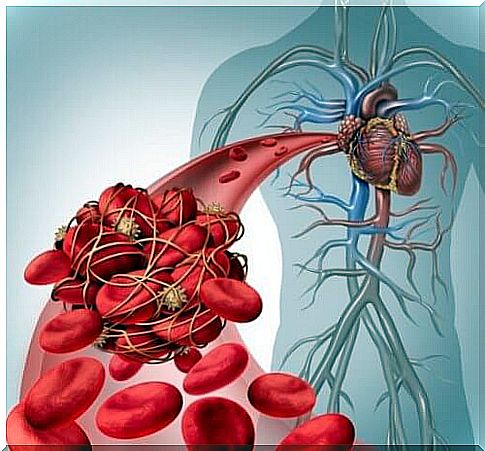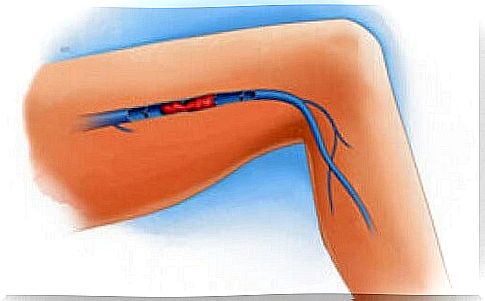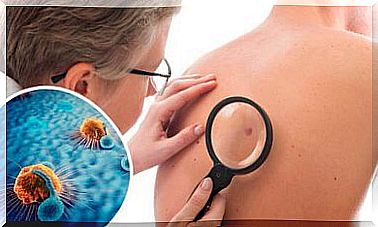How Can Thrombosis Be Prevented?
Thromboses can lead to life-threatening situations, such as pulmonary embolism.

Thrombosis can occur not only on long-haul flights, but also when you do not move much, for example if you are bedridden due to illness or have restricted mobility due to an operation.
In order to prevent thrombosis , you should also pay attention to certain things in everyday life.
How do thromboses develop?
In a thrombosis, a clot of blood forms in a blood vessel. The most common thromboses occur in the veins of the legs and pelvis, but theoretically thrombosis can develop in all blood vessels.
The fact that the blood coagulates is an important natural and vital process.
If a blood vessel is injured, it is “patched” and “sealed” again by clotted blood. This is how our body protects itself from bleeding to death.
But if larger blood clots or blood clots form in our veins, it becomes dangerous because the blood vessel can clog and close it.
Usually such clots are broken up by the body itself before it becomes dangerous and you will not notice it.
If this mechanism is disturbed, however , life-threatening conditions can arise, for example if a blood clot leads to a pulmonary embolism.
Therefore you should always consult a doctor immediately if you suspect thrombosis – on whatever part of the body!

Which factors increase the risk of thrombosis?
A blood clot adhering to the vessel wall can enlarge if the blood flow is slowed or blocked.
This is the case, for example, if the calf muscles are not active enough to additionally pump the blood through muscle activity due to being bedridden (e.g. with flu, serious illness, after operations).
Also, those who are pregnant or take diuretic drugs have a slowed blood flow and thus a higher risk of thrombosis.
Some medications and diseases (e.g. diabetes, cancer, inflammation, …) can also cause the vessel walls to change and blood clots to stick to them better or the blood’s tendency to clot.
There is a particularly high risk after operations, since the operation itself injures vessels and blood clotting is increased.
If you spend the time lying down after an operation, the blood flow is also slowed down and the risk of thrombosis increases many times over.
It is therefore important to exercise enough as part of the therapy plan even after operations and, if necessary, to use so-called “anti-thrombosis injections”.

Are you a risk patient yourself?
It doesn’t have to be a serious operation or illness that leads to a thrombosis; an unfavorable combination of small, thrombosis-promoting factors is sufficient.
You may recognize yourself in the following examples and should therefore keep a watchful eye:
Many contraceptive pills or other hormone preparations (e.g. for menopausal symptoms) increase the risk of thrombosis.
If, for example, a woman who takes such a pill sits in an airplane for several hours on a long-haul flight without much movement, the unfavorable combination can result in a dangerous thrombosis. That wouldn’t be a good start to your vacation!
Harmless framework conditions such as a diabetic who is confined to bed with the flu for a few days would also be conceivable .
Here, too, there is an increased risk of thrombosis!
Simple, actually “unsuspicious” and harmless everyday factors also increase the risk enormously.
Diarrhea removes fluids from the body, making the blood less fluid. If there is another factor that promotes thrombosis, such as obesity, smoking or senior citizens (from approx. 75 years), you should be particularly vigilant.

This is how you prevent thrombosis
- If the doctor prescribes thrombosis injections after an operation, you should definitely continue to use them at home in order not to cause a dangerous thrombosis yourself through negligence! If you don’t feel like injecting yourself, ask a loved one to do it.
- Exercise is the best prevention on longer car or bus trips and long-haul flights! Take regular breaks and do not use them to rest on the park bench, but walk around to activate the “vein pump” in the calves.
- The vein pump can also be activated while sitting : To do this, alternately rock your feet up and down from your heel to your toes.
- During the trip (and otherwise!) Always drink enough soft drinks to keep the blood flowing as freely as possible. The subsequent walk to the toilet also has a preventive effect.
- Wearing compression stockings (“travel stockings”) while sitting for long periods of time also has a preventive effect – not only when traveling, but also for other activities that require long periods of sitting (or standing). These stockings are now available in different compression classes. And also in other colors than “pensioner beige” and they are indistinguishable from fashionable stockings or tights.
When it comes to prevention, a combination of several factors increases protection: sufficient exercise and drinking enough reduce the risk enormously.
If you still wear compression stockings, you will survive extreme long-haul flights to Australia, for example, with a very low risk of thrombosis.









